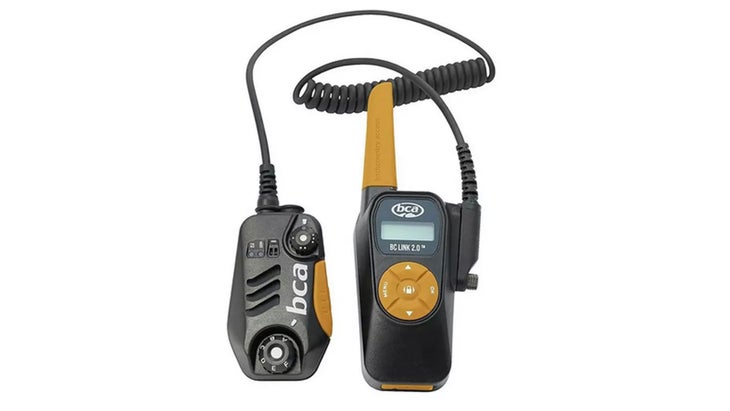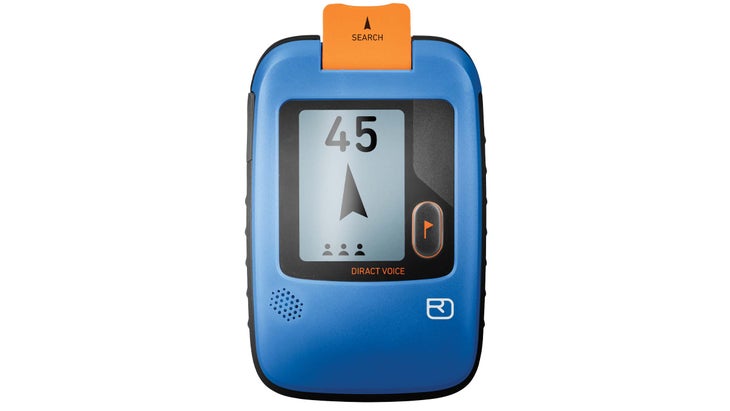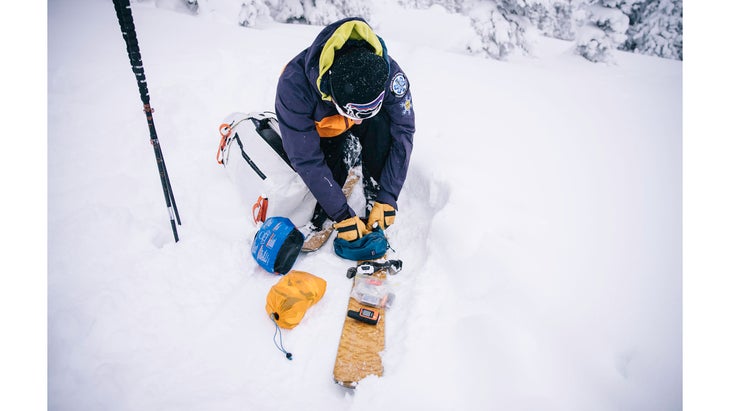Products You May Like
“Hundreds for sure, but I’ve lost the exact count.” That was the answer from Jake Urban, when I asked how many avalanche instructors he’s trained over the years. I followed a couple ski lengths behind him on Wyoming’s Teton Pass, watching him put in a skin track and peppering him with questions about kick turns, layering, and his path through the outdoor industry.
Urban knows backcountry skiing as well as anyone. With 25 years of backcountry skiing experience, 12 years developing curriculum for the American Institute of Avalanche Research (AIARE), and nine years training search and rescue teams around the Tetons (not to mention practicing as a licensed AMGA guide) he’s dedicated his life towards learning and teaching others about how to deal with risk in snowbound environments. Three years ago, Urban founded the Jackson Hole Outdoor Leadership Institute, an avalanche education and emergency medicine organization.
Between laps that morning, Urban and I stopped to look through his pack. The first thing that stood out was how methodically organized it was: Urban thoughtfully puts the most-likely-to-be-used gear on the top, where it will be easy to access, and the least-likely near the bottom. What follows is a list of the gear he carried, in the order it came out of his pack.

BCA Link 2.0 Radio: Before opening his pack, Urban showed me his radio, attached to the shoulder strap. A good radio helps you communicate with your group and, if necessary, emergency services. This version of the Link has a longer range, longer-lasting battery, and stands up to the elements better than most other radios out there.
Gaia App: Unzipping his shell, Urban pulled his cell phone out of a bib pocket. He suggests downloading offline maps on an app like Gaia before you head into the backcountry, even if you know the area well. He doesn’t use Gaia on every tour, but says it’s always good to have in a pinch, if something goes wrong. (Keeping it inside his shell helps keep the battery from dying prematurely in the cold.)
“Possibles” Bag: Next came a small, water-resistant stuff sack filled with items that you could “possibly” need on a tour. This included snacks, wipes for a bathroom break, sunscreen, and a Garmin InReach Mini satellite device for communication backup.
Mammut Rock Rider Helmet and Smith Skyline Goggles: The first thing out of his pack was a lightweight Rock Rider helmet, specifically for fast and light alpine missions. With it came the Skyline goggles, which have a large field of view and easy integration with helmets.

Ortovox Avy Tools: In a separate avy tool pocket Urban kept his shovel, probe, snow saw, and cord, for testing the snowpack and making observations. He also had a Ortovox Diract beacon strapped to his body. This transceiver is easy to use, light, and has a long-lasting battery, but its most notable feature is that it gives you spoken directions when searching for a signal.
Water: Urban carries at least a liter of water, varying by the length of the tour. He often uses a Nalgene, because it is simple and durable. Urban says staying hydrated on tours–especially longer ones– is essential for safety, so that you don’t crash if you have to stay out longer than expected.
Extra clothing: Most people aren’t prepared for the worst, says Urban—even an accident in the sidecountry at the resort could mean an hour in the snow before ski patrol gets to you. He carries heavyweight mittens, a spare hat, a BUFF, plus the Flylow General Down Jacket, and Flylow Malone Gore-Tex shell.
Warm Drink: Urban always totes along an insulated bottle filled with a warm drink, such as tea. He suggests that you save this for the second half of your tour, to help warm you up if needed. Even for short tours, he’ll bring this just in case.

First Aid Kit: A well-stocked kit with tape, bandages, medications, a splint, scissors, and other tools. Of course, getting proper first aid training is helpful to make sure you know how to use the kit correctly.Repair Kit: This kit encompassed a variety of tools—like a multitool, skin wax, ski wax, a spare tail clip, ski straps, and quick-set epoxy, to name a few. Urban says it’s important to know how to fix your bindings, boots, and skis in the field, so you can get back to your car at minimum.
Apocalypse Equipment Guide Tarp: A small tarp is immensely useful in emergency situations. It can be used to help insulate someone from the cold, package an injury, create a bivy or shelter, or even be an improvised sled. Urban prefers the Apocalypse tarp because it’s durable, light, and packable.
